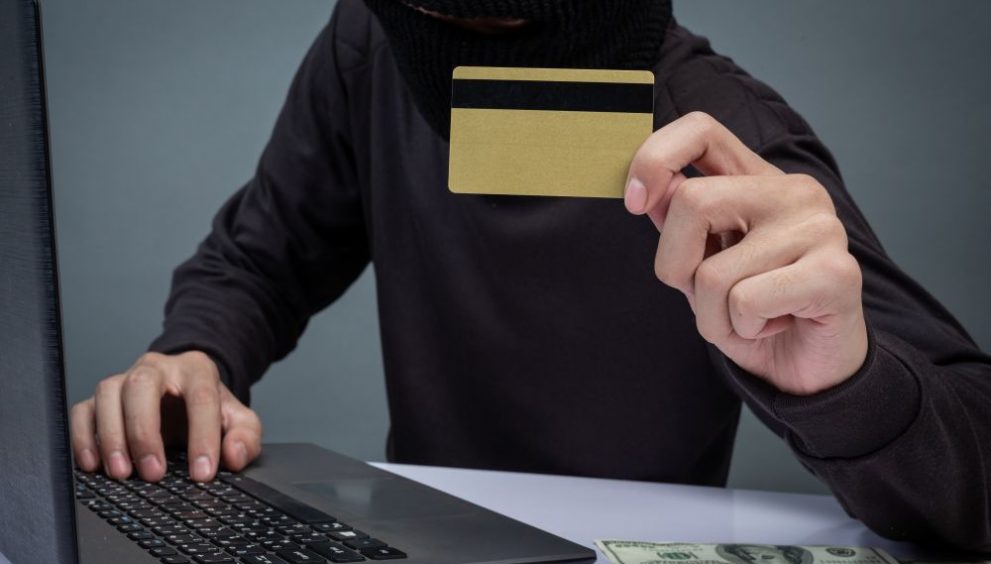Discovering that your credit card information has been stolen credit card information is a distressing experience that demands swift action. In an age where online transactions are increasingly common, the risk of falling victim to credit card scams dark web and having your financial data compromised is a serious concern. The consequences of a credit card hacked can be severe, ranging from unauthorized purchases to identity theft. It is crucial to know what steps to take if you suspect your credit card details have been stolen online.
1. Contact Your Bank or Credit Card Issuer Immediately
The moment you suspect that your credit card information has been stolen, your first priority should be to contact your bank or credit card issuer. Do not delay in notifying them of the situation. Most financial institutions have dedicated fraud departments that operate 24/7 to assist customers in such emergencies.
When you reach out to your bank or card issuer, inform them that you believe your credit card details have been compromised. Request them to:
- Cancel your current credit card immediately
- Issue a new card with a different number
- Place a fraud alert on your account to flag any suspicious transactions
2. Review Your Recent Transactions for Unrecognized Charges
After notifying your bank, the next step is to carefully review your recent credit card transactions. Scrutinize your statements for any charges that you do not recognize or did not authorize. Fraudsters often make small purchases initially to test if the stolen card information is valid before proceeding with larger transactions.
As you go through your transaction history, make a list of any suspicious charges. This list will be essential when filing a fraud claim with your credit card issuer. Be sure to include the following details for each unauthorized transaction:
- Date of the transaction
- Merchant name
- Amount charged
3. Report the Fraud to the Authorities
In addition to informing your bank, it is crucial to report the theft of your credit card information to the relevant authorities. Filing an official report creates a paper trail and can be valuable evidence if you need to dispute any fraudulent charges or take legal action.
Consider taking the following steps:
- File a police report with your local law enforcement agency
- Report the incident to the Federal Trade Commission (FTC) at IdentityTheft.gov
- Contact the three major credit bureaus (Equifax, Experian, and TransUnion) to place a fraud alert on your credit reports
4. Change Your Online Banking and Credit Card Passwords
If you suspect that your credit card information has been stolen online, it is essential to change your online banking and credit card passwords immediately. Hackers who have obtained your credit card details may also attempt to access your online accounts to gather additional sensitive information or make unauthorized transactions.
When updating your passwords, keep the following best practices in mind:
- Use strong, unique passwords for each account
- Avoid using easily guessable information like birthdates or names
- Enable two-factor authentication (2FA) whenever possible for an extra layer of security
5. Monitor Your Credit Report for Unusual Activity
In the aftermath of a credit card information theft, it is crucial to keep a close eye on your credit report. Fraudsters may attempt to open new accounts or take out loans in your name using the stolen information. By monitoring your credit report regularly, you can quickly detect any suspicious activity and take action to prevent further damage.
Here are some steps you can take to monitor your credit effectively:
- Request a free credit report from each of the three major credit bureaus (Equifax, Experian, and TransUnion) at AnnualCreditReport.com
- Review your credit reports carefully for any unfamiliar accounts or inquiries
- Consider signing up for a credit monitoring service that alerts you to any changes in your credit file
6. File a Fraud Claim with Your Credit Card Issuer
Once you have gathered evidence of the fraudulent transactions and reported the theft to the authorities, it is time to initiate a formal fraud claim with your credit card issuer. This process involves disputing the unauthorized charges and requesting a refund for any money lost due to the theft.
To file a fraud claim, follow these steps:
- Contact your credit card issuer’s fraud department
- Provide them with the list of unauthorized transactions you identified
- Complete any necessary paperwork or affidavits to support your claim
- Request a provisional credit for the disputed amounts while the investigation is ongoing
7. Set Up Fraud Alerts or a Credit Freeze
To further protect yourself from the misuse of your stolen credit card information, consider setting up fraud alerts or placing a credit freeze on your credit reports. These measures make it more difficult for thieves to open new accounts or lines of credit in your name.
- Fraud Alerts: When you place a fraud alert on your credit report, creditors are required to take extra steps to verify your identity before granting credit in your name. There are three types of fraud alerts:
- Initial Fraud Alert (90 days)
- Extended Fraud Alert (7 years)
- Active Duty Military Alert (1 year)
- Credit Freeze: A credit freeze prevents new accounts from being opened in your name by restricting access to your credit report. To place a freeze, you must contact each credit bureau individually. Remember to lift the freeze temporarily when you need to apply for credit yourself.
8. Implement Enhanced Cybersecurity Measures Going Forward
To reduce the risk of falling victim to credit card information theft in the future, it is essential to adopt strong cybersecurity practices. Here are some actionable steps you can take to enhance your online security:
- Use secure, unique passwords for all your online accounts
- Enable two-factor authentication (2FA) whenever possible
- Avoid using public Wi-Fi networks for financial transactions
- Keep your computer and mobile devices updated with the latest security patches
- Be cautious of phishing emails and suspicious links
- Consider using a reputable password manager to store and generate strong passwords
- Regularly monitor your financial statements and credit reports for any unusual activity
9. Stay Vigilant and Report New Suspicious Activities
Even after taking immediate action to address the theft of your credit card information, it is crucial to remain vigilant. Fraudsters may continue to attempt to use your stolen information in the future, so it is essential to stay alert and report any new suspicious activities promptly.
Here are some ongoing steps you can take to stay protected:
- Regularly review your credit card and bank statements for unauthorized transactions
- Set up alerts with your financial institutions to notify you of any suspicious account activity
- Periodically check your credit reports for any unfamiliar accounts or inquiries
- Report any new instances of fraud to your bank, credit card issuer, and the authorities
Stay Protected with Quick Heal
By staying vigilant and reporting any new suspicious activities promptly, you can safeguard your financial information and reduce the risk of falling victim to credit card fraud in the future. Don’t let the theft of your credit card information define your financial future – take control and protect yourself today.
For comprehensive protection against online threats, consider using a reliable security solution like Quick Heal Total Security. With features like real-time antivirus protection, safe banking, and virtual keyboard, Quick Heal Total Security provides an all-encompassing defense against cyber threats, helping you stay secure in the digital world.
Check Out Our Full Antivirus Range



